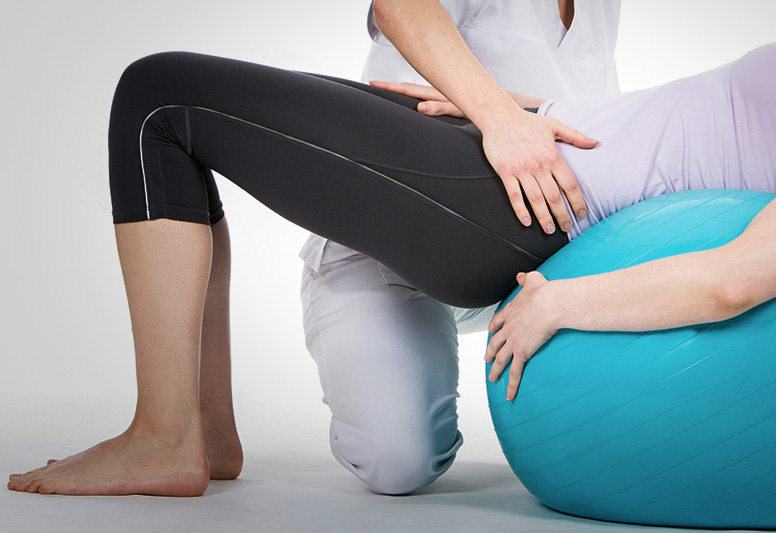Pelvic floor Rehab and Incontensnce

What is Pelvic Rehabilitation?
Pelvic Rehabilitation is a very specialized type of Physical Therapy that focuses on the evaluation and treatment of conditions that involve the abdomen, lumbosacral spine, hips, groin, and pelvic region. Pelvic Physical Therapists receive extensive training to address a broad range of conditions including pelvic pain, sexual dysfunction, bowel and bladder dysfunction, incontinence, pelvic organ prolapse, and pregnancy and postpartum-related conditions, and more.
Examples of diagnoses commonly seen by “Pelvic Therapists”:
- Dyspareunia due to shortened pelvic floor muscles, chronic muscle tension or spasm, vaginal atrophy, perineal injury, scar tissue, or pelvic malalignment:
- Manual physical therapy techniques are used to: 1) Restore normal pelvic floor muscle length and tone, and 2) Correct pelvic malalignment to improve stability and/or mobility of the spine and hips.
- Various types of pelvic pain, including Vulvodynia, Endometriosis, Pudendal Neuralgia, Bladder Pain, and Dysmenorrhea:
- Manual therapy is used to address chronic muscle tension and to improve mobility of connective tissue and scar tissue.
- Men with pelvic pain describe pain in their penis, testicles, groin, or rectum. They are often misdiagnosed as having Chronic Prostatitis when, in fact, the origin of the pain is pelvic floor muscle tightness and/or muscle spasms.
- Sacroiliac Joint Dysfunction causing back, hip, groin, lower abdomen and pelvic floor pain:
- Manual techniques are used to restore mobility/stability of the SIJ, and appropriate lumbopelvic stabilization exercises are prescribed.
- Individuals with symptoms as described by the diagnoses of Interstitial Cystitis or Prostatitis:
- Manual therapy techniques to restore connective tissue mobility and normal pelvic floor muscle tone can reduce or eliminate pain/symptoms in the pelvis that are sometimes diagnosed as IC or Prostatitis. The mechanism behind the viscerocutaneous reflex explains the importance of addressing the restrictions of mobility of the connective tissue in these patients.
- Lower Back Pain and Sciatica, caused bypostural changes and ligament laxity during pregnancy:
- These patients benefit from individualized instruction in good posture and body mechanics for caring for the infant and older child, manual techniques to address muscle tension contributing to pain, and appropriate strengthening and stabilization exercises.
- Urinary or Fecal Incontinence and diminished support of the pelvic organs:
- Thorough evaluation of pelvic floor muscle strength, coordination, and proprioception is needed in order to prescribe the most appropriate exercise program for restoration of continence and improvement in pelvic organ support.
- Pre-operative assessment of Pelvic Floor Muscle Awareness and Function:
- Before surgery, patients are taught the correct way to engage these muscles more efficiently to enhance surgical outcomes and prevent post-surgery incontinence.
- Following surgeries for Pelvic Organ Prolapse, Hysterectomy, Prostatectomy, Laparoscopy, and C-Section:
- Surgical outcomes may be maximized with individualized PFM strengthening, education about appropriate exercise, and manual therapy to address scar tissue, muscle weakness, or muscle tension or spasm that may be present.
- Overactive Bladder or Frequency, Urgency and Nocturia:
- Oftentimes these conditions can be improved by changing basic bladder habits and by restoring normal resting tone and improving function of the pelvic floor muscles.
Examples of some of the treatment techniques that Pelvic Physical Therapists use:
- Manual Therapy: techniques applied internally (vaginally or anally) or externally. Examples are stretching, trigger point release, myofascial release, connective tissue mobilization, soft or deep tissue mobilization, strain-counterstrain, muscle energy, nerve gliding, manual traction, and joint oscillations or mobilizations.
- “Down-training” of muscles” that have lost the ability to relax or return to normal resting tone; reduction of abnormally high tone of the pelvic floor may reduce pain and allow strengthening once normal tone is restored.
**Kegels are not always appropriate for patients with pelvic floor muscle dysfunction and can actually sometimes exacerbate symptoms.
- Biofeedback may be used with vaginal or anal probe or with surface electrodes to improve pelvic floor muscle proprioception and function.